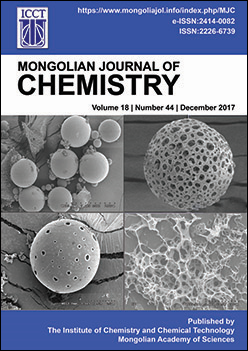Chemical compositions of essential oils from two Artemisia species used in Mongolian traditional medicine
DOI:
https://doi.org/10.5564/mjc.v18i44.881Keywords:
Artemisia palustris L, Artemisia sericea Weber, β-ocimene, 1, 8-cineole, camphor,Abstract
Essential oils of aromatic and medicinal plants generally have a diverse range of activities because they possess many active constituents that work through a several modes of action. Artemisia, the largest genus of the family Asteraceae, has a number of effects against human and plant diseases. The main purpose of the present study was to investigate chemical compositions of essential oils of two Artemisia species, Artemisia palustris L and Artemisia sericea Weber ex Stechm from the Mongolian steppe zone using gas chromatography and gas chromatography-mass spectrometry. The essential oil of A.palustris was characterized by the presence of monoterpene hydrocarbons such as trans-β-ocimene (59.1%), cis-β-ocimene (11.6%) and myrcene (7.1%), while the oil of A.sericea was dominated by the presence of three oxygenated monoterpenoids as 1,8-cineole (25.8%), borneol (22.5%) and camphor (18.8%) which are used for preparation of a fragrance and medicinal products.
Downloads
2998
Downloads
Published
How to Cite
Issue
Section
License
Copyright on any research article in the Mongolian Journal of Chemistry is retained by the author(s).
The authors grant the Mongolian Journal of Chemistry a license to publish the article and identify itself as the original publisher.

Articles in the Mongolian Journal of Chemistry are Open Access articles published under a Creative Commons Attribution 4.0 International License CC BY.
This license permits use, distribution and reproduction in any medium, provided the original work is properly cited.








